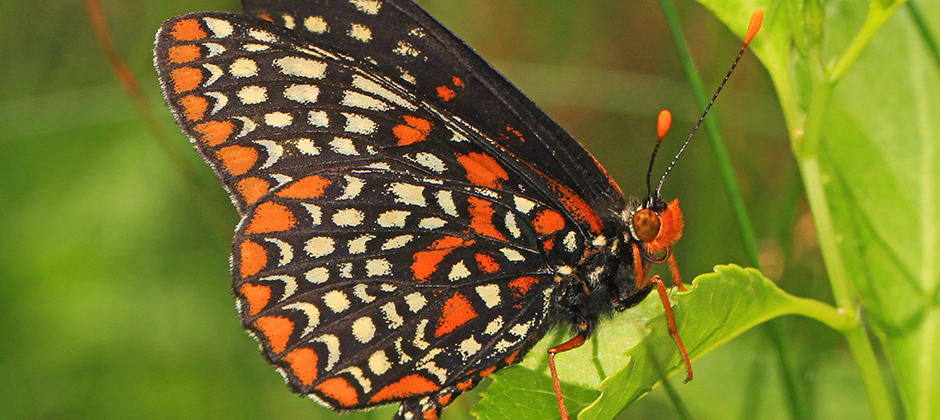Share this article
Can good enough be better than great?
Can high-quality habitat be too much of a good thing?
It might seem like having lots of resources for feeding and breeding would be an all-around benefit for wildlife, but researchers found that for some species, poorer habitat can be beneficial when it comes to movement and habitat connectivity. As a result, they found, urban environments can play a bigger role for some species than people might expect.
“There’s a lot of interest in conservation biology in making landscapes more connected,” said Elizabeth Crone, a professor at Tufts University and lead author of a study on the benefits of lower-quality habitat for the Baltimore checkerspot butterfly (Euphydryas phaeton) published in Ecology. “The way we think about doing that is building networks or corridors of habitat focused on the best places for species to live.” But Crone and her colleagues found the best habitat connectivity for the butterflies may actually be areas that have fewer resources.
“They move more slowly through high-quality habitat, partly because there’s more things for them to do, partly because it’s better for them to be spending more time there,” she said. “They move more quickly through lower-quality habitat.”
The team was especially interested in the ability of species to move quickly through corridors in the face of climate change. She and her colleagues completed a meta-analysis of around 70 species to determine movement in lower- and higher-quality habitat, then homed in on Baltimore checkerspot butterflies. They found that the best landscape for them, in terms of range expansion, would be composed of 15% high-quality habitat and 85% lower-quality hayfields and farm fields.
For species to expand their range, they need to reproduce and move quickly, Crone said. This is particularly important in the face of climate change when some species are shifting their ranges to places where they can more easily survive.
It’s not just butterflies. Crone said researchers can plug information from other species into the equation they used to determine what proportion of high- and low-quality habitat is optimal.
The findings have implications for conservation in urban environments, she said, by suggesting that even modest habitat improvements can help a species persist, and that urban and suburban landscapes can play important roles in connecting natural landscapes.
“Nearly everyone wants butterflies in their garden and are happy to see them in the city,” Crone said. While urban planners figure out how to convert green areas to benefit butterflies on a large scale, she said, “it’s also something you could do now by planting a butterfly garden in your yard.”
Header Image:
Baltimore checkerspot butterflies may benefit from high-quality habitat in urban environments.
©Judy Gallagher








